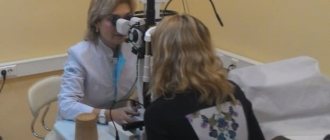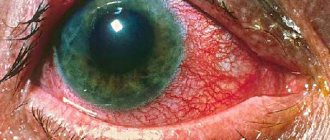Where does dust come from?
Even in the home of the most pedantic housewife, who keeps her home in perfect order, there is house dust. Few people know, but approximately 30% of dust is formed in the process of human activity - these are particles of human skin and animal hair. 70% of dust flies into our homes from afar. Scientists believe that the main sources of dust on the planet are the Sahara Desert and the Japanese Sakurajima volcano.
Unbelievable but true…
Every year, about 20 kilograms of dust settles in an ordinary two-room apartment!
Dust can be domestic, that is, associated with human life, or industrial. Dust particles differ in composition and origin, but cause the same symptoms on the skin and mucous membranes in allergy sufferers.
Effective treatment of dust allergies in children and adults these days necessarily includes removing the allergen from the body with the help of a modern and safe enterosorbent - we are talking about the popular drug Enterosgel. It has been repeatedly proven that enterosorption is an excellent way to stop contact with an allergen, and this, as you know, is the very first thing to start treating allergies. But let’s not get ahead of ourselves and figure out where allergies actually come from.
Prevention
In order to reduce contact with the allergen, it is enough to perform simple measures:
- Regularly carry out wet cleaning of rooms: floors, walls, furniture, household appliances
- Ventilate the premises daily
- Clean carpets and mattresses regularly
- Change bed linen promptly
- It is advisable to replace feather pillows and duvets with synthetic ones.
- Humidify the air daily
- Use only certified air purifiers, which should also be washed regularly
Important!
If you or your child has an allergy caused by dust mites, which cannot be completely eliminated, this does not mean that preventative measures are not needed. Without them, symptoms will worsen much more quickly, and the need for medications will also increase.
Causes of dust allergies
Why is not everyone allergic to household dust? Scientists have found that the tendency to such a disease is associated with hereditary predisposition. Unfortunately, children of parents with allergies are highly likely to also grow up with allergies - it's genetics!
Allergies to dust and mites living in the bed, allergies to the fur and saliva of cats and other pets are the most common types of household allergies.
Dust allergies in children and adults can also occur to feathers and fluff from pillows, particles of the chitinous skeleton of insects (cockroaches, flies), mold spores, pollen from house plants, or tiny waste from home renovations (wood dust).
The immune system's response to the penetration of dust particles into the upper respiratory tract or the mucous membrane of the eyes will follow immediately!
Traditional medicine: anti-allergenic drugs
Let us remember that modern medicine in relation to allergies only deals with symptoms. The patient is prescribed antihistamine drops, tablets or sprays that suppress the release of mediators. To relieve swelling and inflammation, decongestants are prescribed, as well as steroids, which have many contraindications. The course of taking medications for severe allergies to dust can last up to 3 months.
Every allergy sufferer is familiar with this problem - after taking medications, the symptoms are relieved, remission occurs, and after a while everything starts all over again. Symptomatic treatment has another serious drawback: it is very expensive. Costs for examinations, consultations with doctors and courses of medications can vary from 15 to 30 thousand rubles. If you calculate the costs for the future (for example, 3 years in advance), then such treatment will require from 45,000 to 90,000 rubles.
At the same time, annual costs for doctors and medications are ineffective, since the cause of the problem is not eliminated in this way.
Allergy and Enterosgel
In the development of allergies, the key factor is the contact of the allergen (some substance in the air, food, clothing, etc.) with the body. Accordingly, minimizing or eliminating such contact prevents the development of the reaction, which explains the effectiveness of Enterosgel.
It is known that the intestines play a critical role in the functioning of the immune system. Enterosgel removes allergens from the gastrointestinal tract. In addition, Enterosgel removes bacterial endotoxins, promotes the regeneration of damaged mucosa and normalizes the intestinal microflora.
Thus, the functioning of the intestines and immune system is restored, and allergic manifestations are reduced. At the first signs of a possible allergy, you can take Enterosgel in a standard dose. Then use the drug according to the instructions for 1-2 weeks.
Dust allergens
The main allergens of house dust that can lead to allergies are paper, since a huge amount of visually invisible dust most often accumulates on it; pets, namely their fur, which no matter how you care for it, the dust still cannot be completely removed; pillows containing down or feathers; mold fungi, which are most often present in rooms with high humidity; "bed mites"
Allergy symptoms:
- nasal congestion;
- runny nose;
- cough;
- sneezing;
- watery eyes (possibly conjunctivitis);
- dyspnea.
Dust allergy: symptoms
How does a dust allergy manifest? The main “targets” for dust allergens are the mucous membrane of the nose, larynx and bronchi, the mucous membrane of the eyes (conjunctiva) and skin. Quite often, all mucous membranes are affected at once. Oh, this ubiquitous dust!
Allergic conjunctivitis
Dust allergens getting on the mucous membranes of the eyes cause inflammation. Externally, this is manifested by redness of the eyes and eyelids, a feeling of sand in the eyes, lacrimation, itching and swelling of the eyelids.
Allergic rhinitis
Many people know firsthand how dust allergies manifest themselves. After all, damage to the nasal mucosa is perhaps the most common form of household allergy. In response to the ingress of an allergen, the nasal mucosa begins to react violently to “strangers”, and trying to get rid of dust allergens, it activates protective reflexes: sneezing and copious watery discharge from the nose. The mucous membrane swells, which is manifested by nasal congestion and difficulty in nasal breathing. Allergic rhinitis can occur in response to a specific allergen: for example, many patients complain of such a phenomenon as an allergy to house dust mites.
Allergic dermatitis
Skin damage from dust allergens is accompanied by redness, itching, peeling and rashes similar to nettle burns. With constant contact with dust allergens, erosions and ulcers can occur on the skin, causing psychological and cosmetic discomfort to a person. Favorite places for allergic dermatitis are the joints, shins, and upper torso. Allergies on the face and neck also occur.
Dry skin, microcracks and the addition of bacterial inflammation to allergies also cause discomfort. Allergies on the face are also manifested by inflammation of the lips - cheilitis.
Bronchial asthma
Alas, in addition to the above, household dust provokes symptoms of irritation of the mucous membrane of the trachea and bronchi. This is manifested by a dry cough, shortness of breath and attacks of suffocation.
Quite often, bronchial asthma occurs due to occupational hazards. Dust allergies in adults can occur when working with animals - for example, grooms, pet store workers and veterinarians. Working in a hair salon or nail studio can lead to such an unpleasant thing as an allergy to nail dust.
In such cases, doctors recommend changing your field of activity so as not to aggravate the disease.
An allergy to house dust in a child can also be accompanied by symptoms of bronchial asthma. In the absence of contact with the allergen and appropriate treatment, atopic asthma can be eliminated.
Important information for those who suffer from indoor allergies.
You notice that in some room (be it at home or at work) you begin to feel worse. Nasal congestion, sneezing or itching of the eyelids, and watery eyes appeared. Or perhaps you have difficulty breathing or have a cough? It is likely that this is an allergy.
Allergies (hypersensitivity) can manifest themselves in different ways. This is due to the fact that contact of human skin and mucous membranes with allergens, i.e. particles that provoke the occurrence of allergy symptoms leads to the appearance of an inflammatory process in various human organs and tissues. Most people are not susceptible to allergic reactions and therefore do not notice the presence of these allergens. However, those who have such a predisposition experience significant discomfort, and in some cases suffer from severe forms of allergies. Here are the most common manifestations of allergies that may be associated with exposure to allergens present in various environments:
1. Symptoms of allergic rhinitis : nasal congestion, sneezing, itching in the nasal cavity, copious discharge from the nasal passages, pain in the middle ear, decreased sense of smell. In more severe cases, allergic rhinitis may be complicated by sinusitis or ethmoiditis. Polyps can form in the nasal cavity and maxillary sinuses. 2. Symptoms of allergic conjunctivitis : lacrimation, redness of the eyes, feeling of “sand in the eyes,” itching of the eyelids. In severe cases of the disease, swelling of the eyelids and secondary infection may occur. 3. Symptoms of bronchial asthma : attacks of suffocation or difficulty breathing, cough. If measures aimed at preventing exacerbations of the disease are not taken in a timely manner, severe complications may develop that will affect the function of the lungs and heart. 4. Atopic dermatitis : skin manifestations in the form of rashes, peeling and redness of the skin. With a long course, it leads to complications: the addition of a secondary infection, trophic disorders, etc. 5. It is possible to develop urticaria and angioedema (especially in people with hypersensitivity to fungal allergens when eating certain foods - see below).
In some cases, the same person has not one, but several of the above diseases. Symptoms may vary in severity, be present constantly or bother you from time to time. In addition to the above manifestations of allergies, complaints of swelling in the face, headache, weakness, decreased performance, and irritability may appear.
Most often, a person suffering from this form of allergy feels a clear connection between his presence in a certain room and the appearance of symptoms. However, in some cases, it can be very difficult to assume the “culprit” allergen without an allergological examination, especially if the allergic reaction does not occur immediately (delayed reactions are possible in the presence of a fungal allergy).
Without following special recommendations for eliminating the “culprit” allergens, allergic diseases begin to progress, complications appear, and the need for more serious treatment arises.
"GUILTY" ALLERGENS
House dust, mites.
One of the main “culprits” of indoor allergies is house dust. Allergies that are associated with exposure to house dust are called household allergies. It should be noted that house dust is not just one allergen, but a whole mosaic of allergens - particles of plant (wood dust, fabrics - linen and cotton) and animal origin (pet hair, feathers and bird down), fungal spores, insect fragments, etc. .
But the sources of the most dangerous allergens can be considered microscopic mites and their metabolic products. According to various sources, from 3 to 30% of people suffer from hypersensitivity to house dust mites. These invisible creatures are present wherever they can find food (deflated epidermis). Their number is huge; at least 50 species of mites are present in the dust. The most common mites are Dermatophagoides. Their concentration is especially high where animals and birds are present, as well as things made from wool, down and feathers. The main places of residence are pillows, blankets, mattresses, feather beds, upholstered furniture, carpets. Optimal conditions for the life and reproduction of ticks are an ambient temperature of 22-27 ° C, humidity 70-80%. The number of mites increases significantly in late August - early October, so allergy symptoms may worsen during this period.
In addition, allergies can be caused by granary mites, which also live in indoor dust and food products - flour, cereals, cheese, etc.
Signs of allergies to house dust and mites:
- symptoms of the disease appear indoors; - symptoms can be either constant or episodic; — quite typical is an increase in symptoms when cleaning, shaking out old things, when using things that accumulate dust - upholstered furniture, carpets, bedding with natural fillers, soft toys, etc.; - symptoms worsen upon contact with pets and birds.
Library Dust
Library dust is also an allergen! Those who suffer from an allergy to paper dust know well: as soon as you sit too long reading a book or magazine, unpleasant symptoms immediately appear. The “older” the book, the faster and more clearly the disease will manifest itself. In those rooms where books and paper are stored on open shelves for a long time, there is a high concentration of library dust in the air. In addition, it is necessary to remember that in addition to paper dust, in libraries and other rooms where books are stored, there are other allergens in the air - fungal spores.
Signs of an allergy to library dust:
— you develop allergy symptoms when in contact with books and other paper products; - You feel worse if you are in rooms where books are stored on open shelves.
Pets and birds.
Wool, feathers, dander, deflated epithelium, saliva and other waste products of pets and birds are also allergens and can pose a serious danger. If you have an epidermal allergy, symptoms appear upon contact with animals, birds or animal particles. If animals are constantly present in the house, then the symptoms may not disappear at all. Exacerbation of an allergic disease can be caused by wearing woolen clothes or using bedding with wool and down fillings, the presence of carpets and other wool products in the home or office. Most people think that the shorter an animal's fur, the less likely it is to cause an allergic reaction. However, it is not. The risk of allergies has nothing to do with the length of the fur or the size of the animal or bird itself! It is also necessary to remember that after removing animals or birds from the premises, tiny particles of fur and feathers can remain in it for a long time (months and sometimes years).
Signs of allergies to waste products of animals and birds:
- allergy symptoms arise from direct contact with animals and (or) birds or with their waste products - fur, saliva, etc.; - allergy symptoms in the room where animals or birds are (or were); — allergy symptoms appear when wearing woolen items, using bedding filled with wool and down, or staying in a room where there are carpets and other wool products.
Fungal microorganisms.
Another group of allergens are particles of fungal microorganisms. The world of mushrooms is huge, the number of studied species is in the tens of thousands. Some of the most common are fungi of the genus Aspergillus, Penicillium, Cladosporium, Alternaria. In most cases, the culprits of allergies are spores of these microorganisms. Fungi can live in almost any environment: in house and library dust, food products, on various surfaces and even in the human body. They can cause not only plant diseases - rot and mold, but also provoke severe allergic reactions (fungal allergies). Moreover, the same person can develop hypersensitivity not to one, but to several varieties of mushrooms at once. The most optimal conditions for the reproduction of many types of mushrooms are high humidity and ambient temperature - 16-32 ° C.
Fungal microorganisms live not only indoors. Throughout the warm period of the year, fungal spores are present in the open air in fairly high concentrations. In this regard, manifestations of an allergic disease can occur not only indoors, but also outdoors. Symptoms of fungal allergy may be present constantly or occur occasionally. Seasonal exacerbations of the disease are possible, associated with periods of the most active proliferation of fungi.
In some cases, symptoms of fungal allergy do not appear immediately, but some time after contact with the allergen, for example, after a few hours. Indoors, fungal microorganisms can colonize paper products, wallpaper, wood, natural fibers, leather, and may be present on rubber products. They can be found in flower pots, in trash cans, and on sinks and washbasins.
The concentration of fungi is especially high in closed, damp and poorly ventilated rooms, in rotted hay, grass and fallen damp leaves. Their presence is found in products that have undergone fermentation - beer, kvass, sauerkraut, cheese, yeast dough, etc.
Signs of an allergy to fungal microorganisms:
- allergy symptoms appear in closed, damp and poorly ventilated (basement) rooms, in libraries; - allergy symptoms appear upon contact with wet hay, grass, fallen leaves; - allergy symptoms appear when eating foods that have undergone fermentation - beer, wine, cheese, yeast dough, sauerkraut, kvass, etc.; — allergy symptoms may not appear immediately, but some time after contact with the allergen.
Insects.
The term insect allergy refers to an allergic reaction associated with contact with insects. This contact can occur in different ways: through stinging, contact of insects with skin, inhalation of body particles and waste products. The most “dangerous” allergens are proteins that make up the integumentary tissues of insects. The list of insects that can cause allergies is very long. Let's focus only on those that live indoors. An allergic reaction in such cases, as a rule, occurs when inhaling particles of insect bodies and waste products.
Cockroaches! They not only cause moral damage, but can also harm the health of a person suffering from insect allergies. Cockroach asthma is not such a rare occurrence. And the culprit of this disease is the order Blattoptera - cockroaches, which can be present in large numbers, both in homes and work areas, offices.
In addition to cockroaches, very severe allergic reactions can occur upon contact with other arthropods. These are bloodworms (order Diptera) and daphnia, which are components of food for aquarium fish. Allergy symptoms can occur when inhaled or in contact with scales and body particles of representatives of the orders Lepidoptera - Lepidoptera. The most common indoor insect from this order is the moth.
Bloodworms and daphnia (favorite food for aquarium fish) can also cause severe allergy symptoms.
Signs of insect allergies occurring indoors:
- allergy symptoms appear in rooms where the above insects are present; — allergy symptoms occur upon contact with aquarium fish food; — there are no clear signs of an “insect” origin of an allergic reaction appearing indoors. Therefore, it is quite difficult to independently assume the presence of such an allergy without conducting an allergological examination.
OTHER UNFAVORABLE ENVIRONMENTAL FACTORS
Remember that people suffering from allergies are always more sensitive to various environmental factors: cold air, pollutants (for example, ozone), tobacco smoke, as well as particles that are present in the air and, getting on the mucous membranes of the respiratory tract (nasopharynx, bronchi ), lead to aggravation of the condition.
In addition, irritating factors include strong odors - perfumes, flavors, etc.
HOW TO DEAL WITH ALLERGIES
Fundamental in the treatment and prevention of any allergic disease (regardless of how the allergy manifests itself) is the elimination of the allergen, i.e. stopping contact with him. If you cannot completely get rid of the allergen, then it is necessary to minimize its negative impact.
The presence of allergies can only be definitively confirmed by a specialist - an allergist, who, using specific examination methods, will give you an accurate diagnosis and prescribe treatment, as well as recommend preventive measures necessary in each specific case of the disease.
You can obtain more detailed information at the MEDHELP clinic from a specialist allergist-immunologist of the highest qualification category Kisurina G. O.
A few more examples of dust allergies...
We built and built and...
Everyone knows the phrase that repairs cannot be completed: they can only be suspended. This is what folk wisdom says. But, if you are allergic to construction dust, you need to complete the repairs as quickly as possible. In response to construction dust getting on the mucous membranes, coughing, lacrimation, runny nose, sneezing, itchy skin and other “delights” of allergies appear.
And I went to the library and...
Despite advances, many of us still enjoy reading real books more than e-books. Enjoying the smell of fresh printing ink and paper sheets, in our imagination we go on exciting journeys and distant worlds. However, this pleasure is not available to everyone: many people suffer from allergies to paper dust.
This problem often arises when reading old books that have microscopic mold in them.
What symptoms occur when you are allergic to library dust? Respiratory symptoms include dry cough, sore throat, runny nose, redness of the eyelids and conjunctiva.
Allergy to cement dust
Most often, builders or “victims” of home renovations encounter this form of allergic reaction. In this case, cement dust acts as an allergen. Treatment must begin immediately - after all, when fine particles of cement get into the bronchi and lungs, they can cause not only bronchial asthma, but also the proliferation of connective tissue - pneumofibrosis. Doctors recommend that builders work in special respirators that prevent dust from entering the respiratory system, and also regularly cleanse the body of this allergen using Enterosgel.
Allergy to street dust
Signs of allergies to outdoor dust and plant pollen are quite varied. The exacerbation of the disease begins in the spring and ends only in late autumn, when dust and pollen are washed away by rain and covered with snow. With this form of allergy, as a rule, all target organs are affected. Symptoms of dermatitis, conjunctivitis, bronchial asthma and rhinitis occur. With an allergy to plant pollen (hay fever), cross-reactions with food allergens often occur and food allergies develop.
Allergy to house dust in a child
It is most difficult to identify such an allergy at an early stage in infants and young children - older children may complain of coughing and nasal congestion if there are soft toys, carpets and other “dust collectors” in the house.
Causes
Organic compounds that make up dust enter the apartment from the street, from our shoes and clothes, and from pets. Street dust is plant pollen, particles of earth, gravel, asphalt, microparticles that penetrate windows with wind and smoke. Household air pollutants include cellulose from book pages and wallpaper, and mold fungi. Dust mites living in furniture and bedding are strong allergens. They feed on human epidermal cells, secreting special enzymes to break them down, which provoke an allergic reaction.
Diagnosis of allergies
A doctor can make a diagnosis of allergies based on complaints, medical history and tests to identify individual sensitivity to allergens. For this purpose, general clinical examinations of blood and urine are carried out. The state of immunity is examined - analysis for specific antibodies Ig E and IgG, skin tests with allergens are carried out. They are produced as follows: a small amount of allergen is applied to the skin, and after some time the body’s reaction is studied. If there are signs of an inflammatory reaction (swelling, redness appears), then the test is considered positive. In addition to skin tests, prick tests and prick tests are used.
Diagnostics
In order to begin treatment, it is necessary to undergo diagnostics, which will accurately determine the type of allergen that causes an acute atypical immune reaction. To do this, in the absence of contraindications, allergy tests are carried out - tests that involve skin contact with a suspected allergen. Samples can be:
- drip,
- application, when fabric or cotton wool soaked in a substance is applied to the skin;
- scarification, when an allergen is applied to the skin in the forearm area by making scratches with a needle or lancet;
- injection - so-called prick tests.
The allergist’s patient will also have to undergo an immunological blood test to determine the level of immunoglobulin E, an increase in which is evidence of an allergic reaction occurring in the body. A test for antibodies of the IgG and IgE classes allows you to study the reaction to certain groups of substances. This analysis also gives an idea of the intensity of the reaction and the time of its onset.
How to cure dust allergies?
Any allergy treatment should begin with eliminating the allergen. You should deal with household dust in the most active way: remove carpets, soft toys, carry out wet cleaning daily, and leave the apartment during repairs.
At the same time, the doctor selects a suitable allergy medicine for the patient and prescribes medications that will help relieve the symptoms of asthma, rhinitis, and conjunctivitis. As a rule, these are antihistamine tablets for dust allergies, products in the form of sprays, ointments and drops, and the gel enterosorbent Enterosgel.
People suffering from household allergies need to always have an allergy remedy prescribed by a doctor on hand. In severe cases of the disease, hormonal pills for dust allergies are prescribed strictly according to the regimen.
Nowadays, enterosorbents play an important role in the treatment of household allergies. Today, the most popular of them is the time-tested Enterosgel. The drug absorbs toxins that are formed in the body during allergic reactions and removes them from the body. In addition, Enterosgel reduces the level of IgE, reducing sensitization of the body.
Treatment of dust allergies in children and adults should be aimed at changing the immune response to the allergen. In order for the body to stop accepting household dust with hostility, nonspecific immunotherapy is carried out. This treatment is also effective for people with allergies to insect bites and hay fever.
What does VERAMED offer?
We have been successfully treating various types of allergies in our patients for a long time. Experience allows us to talk about the success of therapy in most cases. In clinics in Odintsovo and Zvenigorod you can get help from immunologists, allergists, dermatologists and any other specialized specialists.
In our centers you can visit a doctor, get tested, undergo allergy tests and receive specific therapy, taking into account the individual characteristics of the allergic disease.
Make an appointment by phone and ask your questions to qualified doctors.
How to treat dust allergies with folk remedies?
For mild allergies, treatment with infusions and decoctions of medicinal plants can be used. For this purpose:
- bearberry;
- mint;
- Oak bark;
- chamomile;
- juniper.
Turns out…
In addition to deserts and volcanoes, there is a lot of dust... oceans and seas. During evaporation, they make their “dust contribution”, forming entire clouds. In addition, the atmosphere contains a significant amount of meteorite and comet dust - and not only: when analyzed, you can even find particles of penguin feces from distant Antarctica! What’s most amazing is that all these tiny particles are in your apartment! Dust is very insidious and poses a danger even to people living thousands of kilometers from its source.
Air washers: solving the problem of “internal” dust
Air cleaners will help remove house dust from the atmosphere of the room. This simple device includes a fan, a container of water and a drum. The fan supplies air to the device. The air flow passes through the humidified drum, while dust particles, under the influence of the liquid, bind and settle inside the device body, and the purified air is returned to the atmosphere of the room.
To combat dust, the most effective way is to combine a breather with a HEPA filter and an air cleaner. In this case, the breather acts as the first line of defense: it prevents street dust from entering the apartment, and the sink “deals” with house dust.
To summarize: Tandem breather and air washer are an effective solution to the problem of dust allergies. The cost of a multifunctional and economical breather is about 20,000 rubles. The average price of air washing is from 5,000 to 8,000 rubles. These expenses are one-time, in contrast to the ongoing costs of visiting doctors and buying medications.
What can a household allergy lead to?
With constant irritation of the skin by allergens, eczema can develop, and allergic inflammation of the mucous membrane of the eyes can aggravate the inflammation of the cornea and other tissues of the eyeball.
Due to constant irritation by dust allergens, the nasal mucosa thickens, polypous growths occur and external respiration is impaired. In children, this can lead to academic failure and even mental retardation.
Bronchial asthma can be complicated by an asthmatic condition - this is the name for an attack of suffocation as a result of prolonged narrowing of the bronchi in response to the intake of an allergen.
Anaphylaxis, a violent allergic reaction of the body, also poses a threat to life. Of course, we should not forget that dust is not only an allergen, but also a substance that provokes malignant processes - for example, lung cancer. Scientists believe that the high incidence of this disease is associated not only with the large number of smokers, but also with the degree of air pollution from exhaust gases, industrial waste and substances formed during the decomposition of garbage. Remember, dust is serious!
Breathers: provide air flow and clean it from dust
Modern supply ventilation is a simple and economical solution available to everyone. Structurally, they consist of a housing, an electric fan, a filter system and control electronics. Installed in a channel in the outer wall of the room.
The fan provides a forced supply of fresh air into the apartment, while the air flow passes through a filter that retains particles of dust, soot, smoke, fluff and pollen, fungal and mold spores. With the influx of street air, the “old” air is forced out into the hood along with fine dust.
An important advantage of such cleaning for allergy sufferers is the ability of the filters to retain not only dust, but also other contaminants that can also cause an allergic reaction.
Important! Some breathers have a recirculation function - that is, they not only purify the “external” air, but also ensure that the internal air is cleaned of contaminants (including dust). In other words, when purchasing such breathers - recirculators, you can do without air washing. This will save money and living space.
One example of such a breather is the Ballu OneAir 200, a “smart” supply air purifier with two operating modes: supply and recirculation. This device is equipped with a number of tools for quickly and effectively purifying the air from allergens.
External protection against allergy-causing particles (influx mode):
- High Density Prefilter filter (cleansing from large dust, insects and fluff);
- Basic filter class M5 (retains particles smaller than 1 micron, including microfibers, dust and soot);
- deep purification filter HEPA class H11 (purification of particles with a size of 0.3 microns - mold and fungal spores, pollen, bacteria, dander and animal hair);
- carbon filter (retains industrial emissions, odors, car exhaust, formaldehyde and other contaminants in the gas phase).
Internal allergen protection (recirculation mode)
- built-in UV lamp (disinfects the air, kills viruses and bacteria);
- cold plasma generator (saturates the air with oxygen and hydrogen ions, which bind and precipitate allergen particles in the room air).
HEPA class filters. For those who suffer from dust allergies, when purchasing a breather, you need to pay special attention to the choice of filter elements. The most effective in terms of retaining microparticles are HEPA class filters 10,11,12,13 and 14 - they provide deep cleaning that meets the requirements of medical institutions. The efficiency of retaining microparticles using such a product reaches 99.99%. HEPA filters are capable of retaining dust and other contaminant particles as small as 2.5 microns.
The basis of any filter of this class is a material consisting of micro fibers that are arranged in a chaotic manner. When it filters the air flow due to the adhesion effect, the already “caught” dust particles begin to “catch” other particles. Thus, over time, the efficiency of the filter does not decrease, but increases. The production of HEPA filters is regulated by GOST R EN 1822-1-2010, as well as the international standard EN 1822-1:2009.
By choosing a breather, an allergy sufferer not only blocks the path of street dust, but also takes advantage of all the advantages of a modern ventilation system:
- fresh and clean indoor air;
- optimal microclimate conducive to quality rest and healthy sleep;
- permanently closed windows (no noise, dirt and drafts).
Treatment of allergies to household allergens
Allergen-specific immunotherapy (ASIT) is a personalized and effective allergy therapy, which consists of sequentially introducing certain doses of allergens into the human body.
Doses and duration of therapy are determined by the doctor individually!
During the initial phase of treatment, the administered doses are gradually increased, and subsequently the same dose of the allergen is administered during the maintenance phase. The duration of the course depends on the individual characteristics of the disease in each patient.
REMINDER FOR A PATIENT SUFFERING WITH HOUSEHOLD ALLERGIES (allergy to house dust mites)
Keep your pillows in zippered, allergy-resistant covers.
- Keep mattresses and blankets in zippered, allergy-resistant covers. If there are several beds in the room, then covers must be used for each of them.
- Wash all bedding (duvet covers, sheets, pillowcases) in hot water (60 C) every two weeks, wash anti-allergenic protective covers twice a year in the usual way.
- Remove all carpets. If this is not possible, then use only synthetic carpets or treat carpets with a special solution that kills ticks.
- Do not use heavy curtains or drapes. It is better to use blinds instead. If curtains are used, wash them in hot water as often as possible.
- Use furniture that can be wiped down (wood, plastic, vinyl or leather). Do not use furniture upholstered with fabric.
- To heat the room, use only heating air conditioners with filters to clean the air at the outlet or electric radiators.
- Use an air purifier to remove airborne allergens. Carefully select a purifier model that is suitable for the size of your room. Some inexpensive countertop models do not have the power needed to clean effectively.
- Use air conditioning to prevent high temperatures and humidity that encourage mite growth.
- Avoid using anything that may collect dust; for example, macrame, tapestries, decorative pillows, etc. Use washable toys.
- Avoid over-humidification if you use a humidifier in winter. Mites reproduce at relative humidity of 70-80% and cannot live at relative humidity below 50%. A relative humidity of 40-50% is ideal.
- Keep all your clothes in the closet.
- Clean using a latest generation washing vacuum cleaner with a filter for fine particles.
- Wet cleaning must be done daily. It is advisable to enter a cleaned room no earlier than two hours after cleaning.
- Remove dust before going to bed.
- Wear a well-fitting face mask when cleaning.
- It is not advisable for people suffering from household allergies to clean the apartment.
ASIT allows:
- reduce the severity of clinical manifestations, which leads to a reduction in the dose of antihistamines or allows you to completely abandon antiallergic treatment. Prevent the development of complications of an allergic disease: prevent the transition of mild forms of allergic reactions to more severe ones - anaphylactic shock, Quincke's edema, asthma;
- ensure long-term remission;
- prevent expansion of the allergic spectrum: prevention of hypersensitivity to other types of allergens;
Preventive measures
The main objects of sensitivity to house dust are household mites of the pyroglyphoid family Dermatophagoides farinae and Dermatophagoides pteronyssinus.
D. pteronyssinus and D. farinae belong to the group of permanent inhabitants of dust and occupy a dominant position in relation to other species of mites in residential areas. D. pteronyssinus feed on desquamated scales of the epidermis of human skin and the microflora that develops on them. D. farinae also feed on food debris found in dust. Therefore, preventive measures are aimed specifically at combating household ticks.









